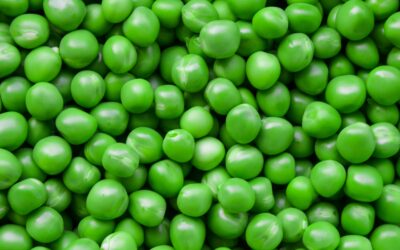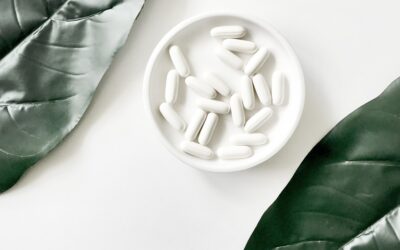Late Friday night I posted on Facebook about artificially flavoured powders to add to milk and their ingredients. Nestle was once very proud to advertise the fact that they artificially flavoured their strawberry Quik (see photo). They no longer advertise this fact, but they still use artificial flavouring.

So what is the difference between artificial and natural flavouring?
Not much! To be called natural the manufacturers must start the process to make flavouring with the actual ingredient, for instance if you want strawberry flavouring then you start with the strawberry.What is disheartening is, whether they start with the real food or not the end flavour product is exactly the same. Here is the
chemical formulation (I wouldn’t exactly call them ingredients) for strawberry flavouring.
This is artificial and natural strawberry flavouring; amyl acetate, amyl butyrate, amyl valerate, anethol, anisyl
formate, benzyl acetate, benzyl isobutyrate, butyric acid, cinnamyl isobutyrate, cinnamyl valerate, cognac essential oil, diacetyl, dipropyl ketone, ethyl acetate, ethyl amylketone, ethyl butyrate, ethyl cinnamate, ethyl heptanoate, ethyl heptylate, ethyl lactate, ethyl methylphenylglycidate, ethyl nitrate, ethyl propionate, ethyl valerate, heliotropin, hydroxyphenyl-2-butanone (10 percent solution in alcohol), α-ionone, isobutyl anthranilate, isobutyl butyrate, lemon essential oil, maltol, 4-methylacetophenone, methyl anthranilate, methyl benzoate, methyl cinnamate, methyl heptine carbonate, methyl naphthyl ketone, methyl salicylate, mint essential oil, neroli essential oil, nerolin, neryl isobutyrate, orris butter, phenethyl alcohol, rose, rum ether, γ-undecalactone, vanillin, and solvent.
I count 48 ingredients/chemicals. Now you know what is behind the word flavouring, never will you be able to see flavour in an ingredient list without seeing what is behind it. The flavour industry have thousands of different flavours in vials in laboratories and the food industry use them in most foods. Read your ingredients in your pantry and
fridge now – and see how many flavours have snuck into your food supply then multiply it by a factor of 48. That will give you an idea of the extra non food items (albiet in small amounts) in your families food.
I know there will be some engineers or food scientist that might read this and say they could do the same for an apple. My answer is that I trust nature not chemical laboratories. Many questions on the facebook post about Quik and flavourings was about Milo – apparently Milo is seen as the healthy alternative to any other milk flavouring additive.
The Ingredients of Milo are as follows; Barley Malt Extract, Rice and/or barley, milk solids, sugar, fat reduced cocoa powder, minerals (calcium, magnesium and iron), Vitamins (C, B1, B2 and A), soy. I got this ingredient list from the Nestle website. I looked everywhere for Milo ingredients on the Nestle website but all they would say was how good it was and how many vitamins and minerals there were but nothing about ingredients. So I found the milo cereal ingredients and within these ingredients are the milo ingredients. Third line down you will see Milo then the rest of the ingredients are the milo ingredients to the end square bracket (]).
Let’s take a look at the ingredients.

Barley Malt Extract; I’m not sure how this particular barley malt extract is made, but there will be gluten in this and if you are gluten sensitive or have an autoimmune condition then milo is off your list. The fact that it is an extract means that there has been a process done to it, either heating or enzymatic to the barley in order to break down the proteins and carbohydrates, there will also be removal of some parts of the barley, my guess is that the fibre and maybe some of the protein has been removed and only the carbohydrate or sugar is left (the word malt gives me that impression). Most barley malt extracts are used in beer and breads to create various flavors and as a sugar source for yeast development. Like any food in it’s whole food it is at its very best.
There is also the addition of barley and or rice, don’t have a problem with this if it is in its whole state, but there will be gluten in the barley.
Milk solids are usually milk protein concentrates (MPC’s) which is often the waste product from the production of cheeses and other cultured dairy. This product has to be dried, not sure how this is done, there are some good methods and some not so good methods for drying.
The sugar is no doubt white, so there will be no nutrition there just 99.4% sucrose and 0.6% ash. I have read on some milo tins maltodextrin from corn – again it is an extract and you have to ask if the corn has been genetically modified. Nestle is not one of the companies that is free from GM foods.
Fat reduced cocoa powder is the powder left after cacao butter is extracted. This can be done a number of ways either using solvents or cold pressed. The first way is of course more economical for the food industry at large. The cacao butter extracted from the cacao bean is usually used in the cosmetic industry and the dry powder in the food industry, although cacao butter is becoming popular in homemade skin care products and homemade chocolate making.
A few token vitamins and minerals have been thrown into the mix, but they fail to tell me the origin of these. Many vitamins and minerals for the food and supplement industry are not extracted naturally from plants but rather made from petrochemical by products. Keto acid creates vitamin C and acetone is the beginning of Vitamin A. If they did tell me the chemical names of the nutrients added and they ended in ate or ide then I would suspect that they are from a synthetic origin rather then a plant based origin.
My guess that any fortified food will not be fortified with the real thing, the food industry for the most part is about profits for themselves and share holders, they are in the business of making money and their food and marketing is not always ethical. Nestle who makes milo is part of a giant push to bring industrial food and drinks to the masses in developing countries such as India and China. This is not in the best interests of these economies, they are poor and with the burden of poor health due to poor food choices the results could be very scary for these nations.
Soy is the final ingredient it is probably in the form of lecithin which is a modified soy product. There is also the question to be asked as to whether it is genetically modified.
I have an old list of milo ingredients from my past blogs that did say it had oil in it but it seems to have been taken out. The vegetable oil could be one containing one or more of the following: palm oil, palm olein, coconut oil, palm kernel oil, corn oil, soya oil). So read your ingredients always as food manufacturers can change ingredients without notification. In the end you will realise that refined and mass produced packaged foods should not be in your shopping trolly if you value your health.
All in all milo would not be something that I would think is any more healthier then any of the other milk flavoured drink additive. It has just been marketed for that position very well.
If you do love milo why not make your own. Knowing that every ingredient is in it’s whole form and maximum nutrition is the result. This recipe comes from Cathy Benson.
Cathy Benson and I communicate via email on a regular basis, she has a beautiful young daughter who is not thriving like she should. Cathy has devoted her life to nourish her daughter with natural ingredients rather then protein powders and sustagen formulas as advised by the dietitian, here is one of her daughters favourite drinks.
Click on the link below for Cathy Benson’s Homemade Milo Recipe
https://changinghabits.com.au/recipes-1/home-made-milo







0 Comments